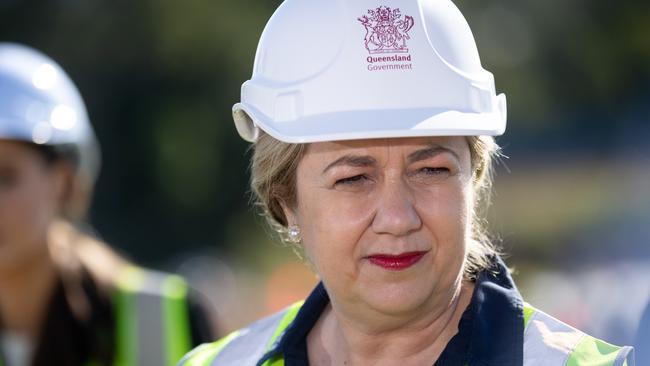Housing summit land audit uncovers 27 hectares of housing potential
More than 27 hectares of state government-owned land have been identified as potential prime pockets for housing as part of a widespread audit following the housing summit.
QLD Politics
Don't miss out on the headlines from QLD Politics. Followed categories will be added to My News.
More than 27 parcels of state government-owned land have been identified as potential prime pockets for housing as part of a widespread audit, with councils flagging hundreds of smaller blocks.
The Queensland government launched an urgent land audit across the state in the aftermath of the housing summit in a bid to identify suitable development pockets.
The housing summit was a crucial win for The Courier-Mail’s Hitting Home campaign, which also led to the government promising to investigate the impact of short-stay rentals on rental availability, allow homeowners to lease granny flats and increase its expenditure on social housing.
The state government revealed the audit found 27 parcels of land one hectare or larger across nine local government areas, with 14 of them in Brisbane and the rest spread across Bundaberg, Fraser Coast, Gold Coast, Logan, Maranoa, Moreton Bay, Noosa and Townsville.

But further work is required, with the state government undertaking “more detailed investigations”.
A shortlist of smaller sites, particularly in regional centres, remains under way and is “close to being finalised”.
Meanwhile, councils across the state have collectively identified 870 parcels of local government-owned land and faith-based organisations have found 13 potential sites.
According to the state government, discussions with councils are continuing as non-government organisations conduct their own due diligence.
Premier Annastacia Palaszczuk said the government had built more than 4300 social homes since 2015, with 647 under construction, but “creative solutions” were needed.
“That’s why we’ve been working to identify sites where housing might be able to be delivered quickly,” Ms Palaszczuk said.
“Every state and territory is experiencing housing pressures. That’s why we held the Housing Summit and a key outcome has been this land audit.”
Newly minted housing minister Meaghan Scanlon said identifying the sites was an “important tool in the toolbox” to deal with the housing crisis.
“There’s no one size fits all approach to addressing housing, and it’ll require different levels of government, industry and organisations to work together,” she said.
A report commissioned by Queensland Council of Social Service earlier this year revealed at least 150,000 households in the state were in critical housing stress.
This equates to about 300,000 Queenslanders experiencing housing insecurity, as soaring rental prices disproportionately affect lower-income families and inadequate supply of social housing leaves many languishing.
The report found a staggering 11,000 new public dwellings were needed each year to clear the backlog and prepare for forecast growth in households in need of help.





